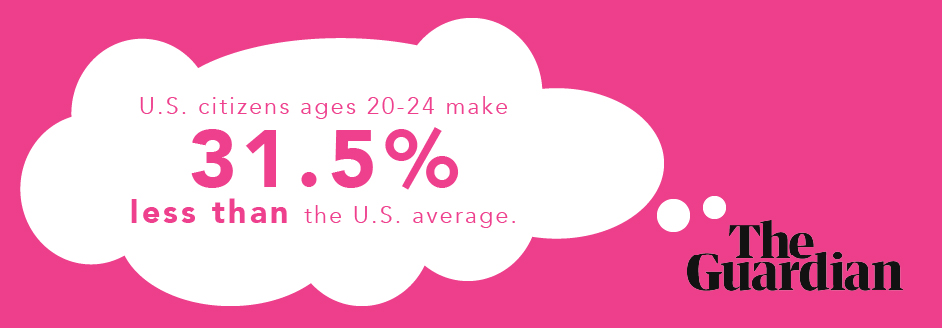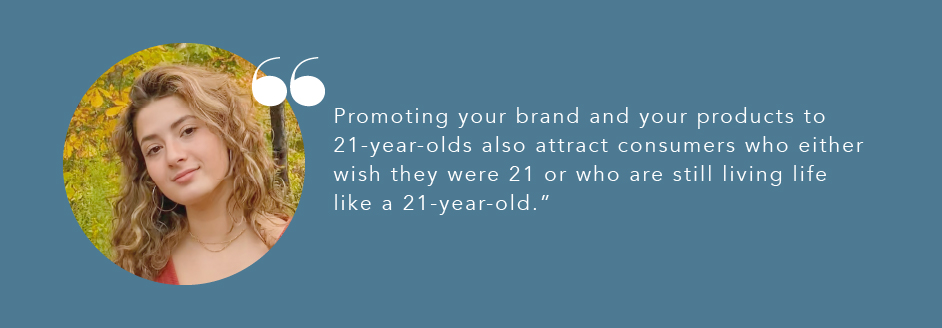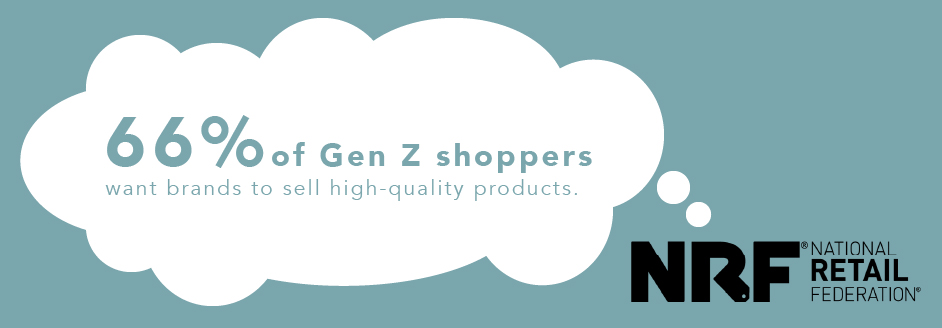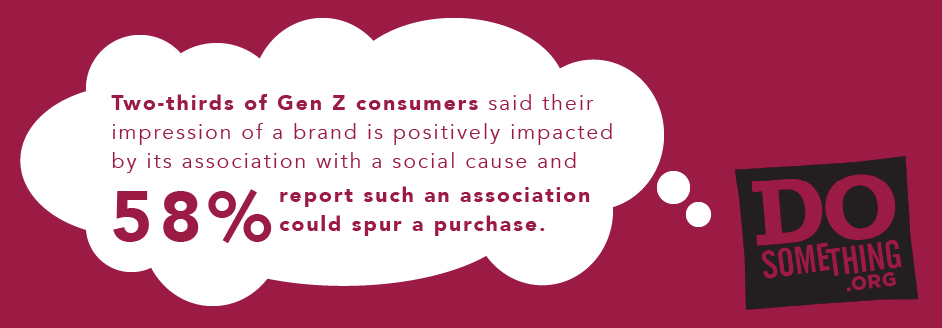Dear Brands Trying to Market To Me,
I’m a 21-year-old marketing student whose preferences represent a market segment that today’s digital marketers often struggle to breakthrough to.
As a proud member of Gen Z, I prefer to shop online, which means I’m constantly being marketed to via traditional digital advertising and remarketing. As a relatively new consumer, I’ve learned to make the purchasing decision that will bring me the highest value at the lowest price. But that’s just a little about me. There are many other important factors you can take into consideration when marketing to me that may help you win over my demographic.
But first things first — if there’s one thing you need to know about me it’s that I don’t make a lot of money, so if you’re a brand that is trying to get me to buy something…YOU BETTER BRING IT!
I’m Young and My Yearly Salary is $0
A lot of 21-year olds like me are in college and therefore don’t make a lot of money, if any at all.
In fact, according to an article in the Guardian, U.S. citizens ages 20-24 make 31.5% less than the U.S. average, compared to 10.13% less than the average in 1979.
While income trends negatively over the years, the percentage of 18-24-year-olds enrolled in college grew from 25% in 1979 to 41.2% in 2016– telling us that although young adults aren’t making as much as they had in the past, they’re becoming more educated and have been forced to make more selective spending decisions over the decades.

This presents a challenge for brands, marketers, and advertisers alike as they navigate the ever-changing digital landscape that my age group spends so much of our time on.
So if you truly want to appeal to me and my generation, here are a few tips.
Make it quick and please make it interesting
Please give it to us straight. Our personal lives can get pretty crazy and we’re already constantly consuming different forms of marketing on a variety of different platforms. If you want your campaign to resonate, it needs to be more concise, informative, and relevant than the rest.
Brevity goes a long way, but in a world where we all have the option to keep scrolling, making your content as visually appealing as possible goes an even longer way in persuading the 21-year-old behind the screen to take a gander at the content you’re presenting them.

Aesthetically pleasing content means nothing, however, if the brand and product behind the content don’t share the same simple and visually attractive nature.
Although my generation may seem like a hassle to market towards, promoting your brand and your products to 21-year-olds will also attract consumers who either wish they were 21 or who are still living life in a 21-year-old’s mindset, which is a bonus.
Twenty-one-year-olds have grown up with technology at our disposal and the vast majority of us in the U.S. are active and fluent on social networks, making my demographic a very influential crowd when it comes to shaping the opinions of older generations via digital and social media.
If I’m going to spend the little money I have…make it worth it
We’ve grown up shopping in Walmart and on Amazon and are tired of using our limited disposable income to replace cheap products that don’t perform well in the first place and break easily.
Young people are beginning to realize that investing in a quality product can actually cost less in the long run and the intrinsic and extrinsic value that comes from investing in that dreamy product is worth the dollar amount spent (to an extent).

This is especially and increasingly true in the apparel industry, where young consumers are moving away from fast-fashion companies and towards brands that produce sustainable, high-quality garments that can last a lifetime – or to buying those high-quality products second-hand when they better fit into our budget.
Losing out on sales from consumers who are simply replacing their broken or no longer effective product can be seen as a con, but when a consumer sees that their product doesn’t need to be replaced because of its high quality, they’ll develop a trusting relationship with the brand and will be more likely to recommend or gift the product to loved ones.
I dig it when you show that you care about something other than making $
My generation has now lived through a global pandemic, two recessions, mass shootings, war, the never-ending student debt crisis, the fight for equal rights, and a climate crisis. We’ve seen a lot at a young age and we’re hyper-aware.
America is a completely different place than it was in 2016 when today’s college seniors were choosing their majors and accepting enrollment at colleges and universities that are now more expensive and more necessary for stable lifelong income than ever. To be frank, the last few years have felt like growing up in a big, roaring dumpster fire.
Young adults have grown up in a cold and mean world, one that is far different from the one our parents grew up in, and our generation as a whole knows it has an obligation to not make the same mistakes. This reflects dramatically on our purchasing decisions.

From our perspective, the least you could do as a company or institution is something good for the world we all share. By aligning your brand’s values with the values of your target audience, you’re presenting them with the option to invest in both the goods/services they need and in whatever initiatives that they care about.
In a world where there are infinite options to choose from and a limited amount of disposable income, Gen Z and Millennials alike have seemingly learned how to pick the option that will do the most good, because why wouldn’t we?
Although my preferences and income are sure to change as I grow up (hopefully), the landscape I was raised in will always have a mark on the choices I make.
So, show me something as creative, conscious, and unique as I am and we’ll see if I identify with it enough to spend my hard-earned money on it.
Miranda Dow is a 21-year old marketing student at the University of New Hampshire who spent the Fall Semester honing her skills during a digital marketing internship at Tiny Bully.
